Crickets - Family GRYLLIDAE
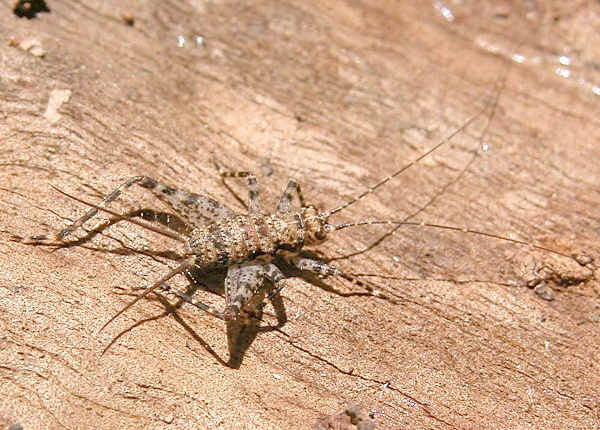
- Male
The True Crickets can be distinguished from others by presence of long ovipositor and long cerci in females. They are nocturnally active. They live on the ground, can be found in burrows, crack in soil or amongst leaf litter. Males produce complex love songs by rubbing wings together. Most species are ground dwelling. Male are aggressive. Some species are kept as pets and for fighting in some countries.
- Black Field Cricket
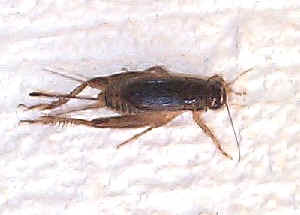

- Lepidogryllus sp., subfamily Gryllinae, female and nymph, body length 25mm, 10mm
- The Black Field Cricket is dark brown in colour. Female has long pin at the end of the abdomen which is its ovipositor. The second picture shows the nymph cricket, look similar to the adults except they are wingless.

- Male Field Cricket calling in the hole, heading outwards with antenna outside.
 Click here to hear the mole cricket sound,
8 sec.
Click here to hear the mole cricket sound,
8 sec. - Field Crickets are common in backyards in Brisbane. Although we seldom see them, we always hear them. Male cricket chirp from evening to dawn. Their songs are very complex. They live under dead plant materials and also feed on them.
- Spider Cricket
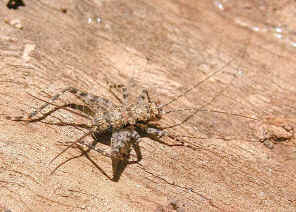

- Endacusta sp., subfamily Phalangopsinae, body length 20mm
- This cricket was found hiding under rotten wood during a winter day. Its body was grey in colour with dark brown patterns. The cricket is active at night and could be mistaken as spider because of the
- Silent Leaf-runner
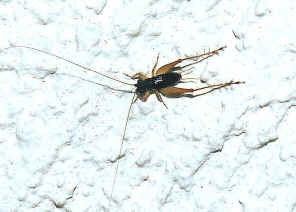
- Metioche vittaticollis, body length 10mm
- We sometimes find this tiny cricket on the wall outside our house at night. The insect is wingless with shiny dark brown body. Its legs are light brown in colour.
- Bush Cricket
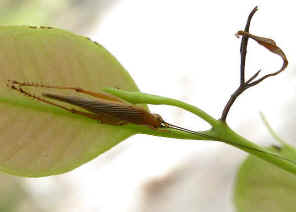

- Aphonoides sp., subfamily Eneopterinae, body length 30mm
- Mid summer in Karawatha Forest, we found this Tree Cricket hiding under leaf during the day. It walked away slowly when we disturbed. It is pale brown in colour. It has very long antenna, longer than twice the body length.


